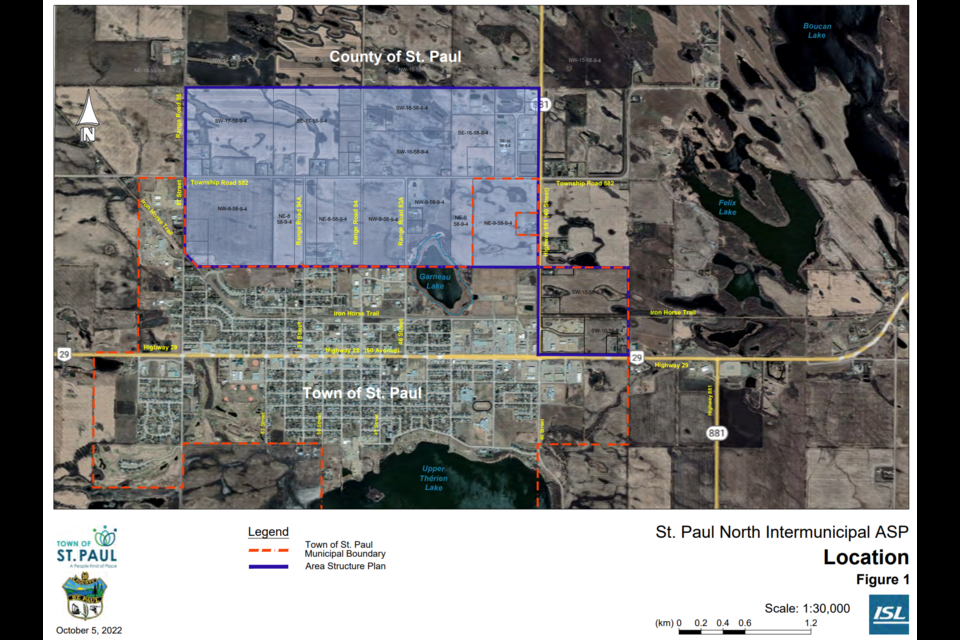ST. PAUL – The Town of St. Paul and the County of St. Paul is inviting the community to share their thoughts on the draft St. Paul North Intermunicipal Area Structure Plan (AISP), which involved a Community Open House in St. Paul on May 24.
For community members unable to make it to the open house, they can get involved via an online survey at: stpaulnorthasp.ca, under “Get Involved." A survey is available to the public until June 13.
The plan area is located east by Highway 881/40 Street and on west by Range Road 95, with Range Road 94 running vertically through the middle of the plan area. Township Road 582, an upgraded road, also passes horizontally through the middle of the plan area, according to the plan website.
The plan aims to address future land use and infrastructure in the area, which includes the establishment of two gateway commercial and industrial areas, development of new residential neighborhoods, and the provision of additional recreational opportunities and trail connections.
The IASP is an essential tool for the Town and County to enhance their commercial and industrial sectors, as well as strengthen their regional significance, according to the drafted plan.
“An Area Structure Plan (ASP) describes how the neighborhood will grow into the future,” explained David Schoor, senior planner with ISL Engineering. On the other hand, an AISP is when two municipalities, for example, partner to develop an ASP that falls within the lands occupied by both municipalities.
For the Town and the County, the AISP is specific to the future development of about 588.4 hectares located north of the Town. The AISP is “intended to create a long range, land use transportation and servicing plan” for the area, according to Schoor.
“It's a 50-year vision,” he said, explaining the AISP’s objectives include residential, commercial, and industrial development.
According to Schoor, ISL Engineering engages with landowners and residents in the plan area, seeking their input on their interests and concerns for the draft. The draft plan “responds to those concerns,” he said.
Courtney Laurence, also a planner with ISL Engineering, clarified that an AISP is not set in stone, but is a guideline.
“It is just to provide a plan to help people better understanding on what it could look like, and to help ensure that future development and growth happens in a logical and efficient manner,” said Laurence.
She also noted that adopting the plan does not automatically result in the town annexing any land or increasing taxes. Existing land uses remain the same and landowners in the plan area would continue to use their properties as they currently are.
The plan only comes into play if and when landowners decide to make changes or pursue different uses for their land, she explained.
Meanwhile, AISP also helps prevent haphazard development by providing an initial framework and guidance for future development. Land development would also be easier due to the background work for the land, including the environmental and transportation analyses having already been completed.
Having an AISP is also attractive to potential developers looking to invest in the area, according to Laurence, as an AISP provides them with a level of certainty and convenience.
“There's still obviously a lot of research and work that someone would need to do to move forward,” said Laurence, but having a pre-existing plan reduces the burden on them and makes the community more appealing for development.
For example, when an area has already been identified as industrial, developers would not need to start the process of development from scratch.
The AISP can also be amended to accommodate new developments or if it is no longer relevant.
“Of course, we can't predict the future. So, we do our best to work with landowners identify what they see as their vision for their land and their future,” said Laurence.



